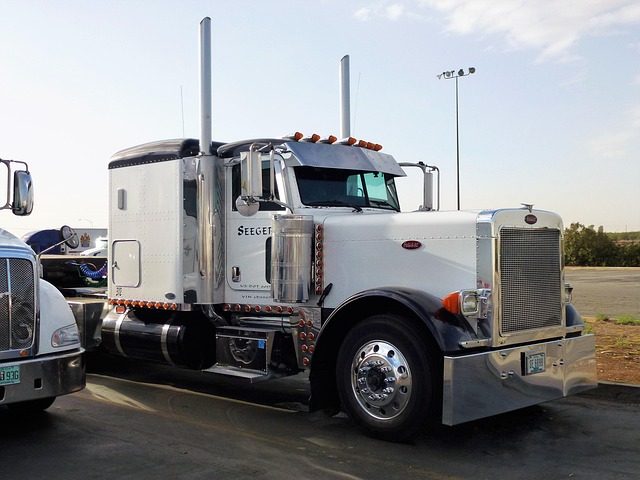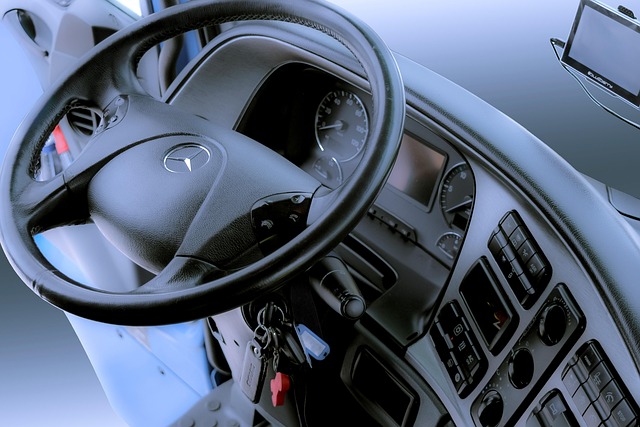Looking to register your car in California? This comprehensive guide walks you through the process step-by-step. First, understand the state’s unique car registration requirements and essential documents needed. Next, visit your local DMV with all necessary paperwork, including a valid VIN verifier. Verify your vehicle identification number (VIN) and complete required forms accurately. Finally, pay the registration fees and receive your official license plate. Simplify the process today with our expert advice on how to register a car in California efficiently.
- Understand California Car Registration Requirements
- Gather Necessary Documents for Car Registration
- Visit Your Local DMV to Register Your Vehicle
- Verify VIN and Complete Required Forms
- Pay Car Registration Fees and Receive Your Plate
Understand California Car Registration Requirements

Before registering your car in California, it’s crucial to understand the state’s specific requirements. The California Department of Motor Vehicles (DMV) mandates that all vehicles operating within the state be properly registered and have up-to-date documentation. This includes a valid vehicle registration, proof of insurance, and a current emissions test certificate. One essential component of this process is ensuring your car’s Vehicle Identification Number (VIN) is accurately verified. The DMV utilizes a VIN verifier to cross-reference your vehicle’s information with state records, confirming its authenticity and history.
Using a mobile VIN verifier can simplify the registration process, especially for out-of-state vehicles or those with complex histories. These portable tools allow you to perform a quick and convenient mobile vin verification, checking crucial details like the vehicle’s mileage, previous owners, and any reported accidents or thefts. By having this information readily available, you can streamline the registration process at your local DMV, saving time and effort.
Gather Necessary Documents for Car Registration

Before heading to the DMV for car registration, ensure you have all the required documents ready. This process can be streamlined by utilizing a DMV VIN verifier to cross-check your vehicle’s information and identify any discrepancies. Key documents include your vehicle’s title (or proof of ownership), valid driver’s license, and current insurance card displaying the vehicle as covered. For a hassle-free experience, consider conducting a mobile vin inspection beforehand to verify the Vehicle Identification Number (VIN) and ensure all details match.
Additionally, having a recent smog certificate is often necessary for registration, especially in California. Some states also require a safety inspection certificate. It’s advisable to check with your local DMV or vehicle registration office to confirm what specific documents are needed, as requirements can vary based on the make and model of your car. Opting for a mobile vin verification service can save time and effort by allowing you to verify your vehicle’s details from the comfort of your home or on-the-go.
Visit Your Local DMV to Register Your Vehicle

To begin the registration process for your car in California, start by visiting your local Department of Motor Vehicles (DMV) office. This is a crucial step as it allows you to officially register your vehicle and obtain necessary documentation. Bring along all required documents, including proof of ownership, identification, and any relevant insurance information. The DMV staff will guide you through the registration process, which involves verifying key details about your car using its unique Vehicle Identification Number (VIN).
A VIN verifier, often available through mobile apps or services, can be a handy tool to ensure the accuracy of your car’s information before visiting the DMV. This includes checking for any discrepancies in the vehicle’s history and ensuring that all records are up-to-date. With this preparation, you’ll be well on your way to completing the registration process efficiently, making your car officially registered and ready for California roads.
Verify VIN and Complete Required Forms

Before you begin the registration process, it’s crucial to verify your vehicle’s VIN (Vehicle Identification Number) and ensure all required forms are completed. Start by using a DMV-approved VIN verifier to cross-check the number against your car’s documentation. This step is essential as it confirms that your vehicle’s details match the official records. You can opt for a mobile vin inspection or use an online tool, but make sure the results are accurate and reliable.
Once you’ve verified the VIN, gather all the necessary paperwork, including the registration application form, proof of insurance, and any other documents requested by the California DMV. Completing these forms correctly and entirely will streamline the registration process, ensuring a smooth transition for your vehicle’s legal status in the Golden State.
Pay Car Registration Fees and Receive Your Plate

After confirming your vehicle’s eligibility for registration, the next step is to pay the required fees. The California Department of Motor Vehicles (DMV) charges a base fee that covers the cost of registration and license plate issuance. Additional fees may apply based on factors like the type of vehicle or if you’re renewing more than one year early. You can typically pay these fees online, by mail, or in person at any DMV field office.
Once your payment is processed, the DMV will issue your unique California license plate, often referred to as a “tag.” They’ll also provide you with a Vehicle Identification Number (VIN) inspection report, which includes details about your vehicle’s history and specifications. Some services even offer mobile VIN verification options, allowing for added convenience. Using a DMV VIN verifier or opting for a mobile vin verification service can help streamline the process further by providing instant access to your car’s information.
Registering a car in California is a straightforward process that involves understanding key requirements, gathering essential documents, and visiting your local DMV. By verifying your vehicle’s VIN and completing the necessary forms, you’ll be on your way to securing your vehicle’s registration and receiving its unique license plate. Utilize a reliable dmv vin verifier to simplify the initial verification step, ensuring a smooth and efficient car registration experience.
